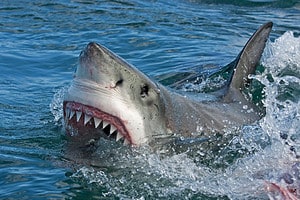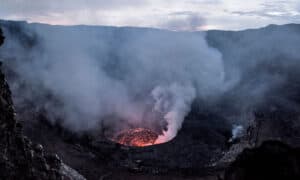Few things bring fishing enthusiasts more joy than swapping stories of prize fish. A record-setting catch represents the peak of fishing achievement, and every year anglers compete with one another to catch a fish worthy of the history books, such as the largest brook trout ever caught in Indiana.
While not the largest of fish, the brook trout is popular game fish, particularly with fly fishers. In fact, the brook trout ranked as the most popular game fish in America during much of the 19th century. Only once it was replaced by brown trout and rainbow trout did the popularity of the brook trout start to diminish. Still, brook trout remain highly sought after by anglers, especially the largest specimens.
Indiana offers excellent fishing opportunities all year long, thanks to its wealth of rivers, streams, and lakes. You can find a wide variety of fish in the states, including brook trout. But who holds the record for the largest brook trout ever caught in Indiana, and how much did it weigh? Keep on reading to find out!
Where Brook Trout Live
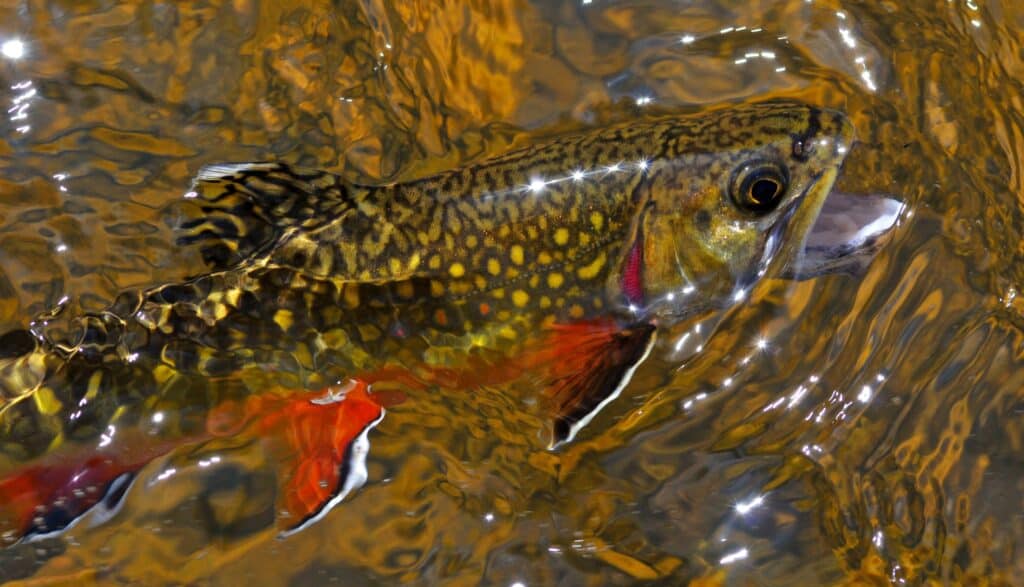
The largest brook trout ever caught in Indiana was caught in 1973.
©Dec Hogan/Shutterstock.com
Brook trout are native to the eastern half of North America. Historically speaking, their range extended throughout the waterways of the Great Lakes Region and the Appalachian Mountains. Toward the end of the 19th century, brook trout numbers started to decline in their native range. This decline resulted from the introduction of larger brown trout and rainbow trout. Today, brook trout mostly inhabit hard-to-reach waterways at high elevations in their native range. However, beginning in the mid-19th century, several organizations began to introduce brook trout into non-native habitats. Today, you can find brook trout throughout parts of the central and western United States, as well as in Europe, Argentina, and New Zealand.
Brook trout thrive in a variety of environments, including rivers, streams, lakes, and ponds. They prefer cool, clear, pure water. Unlike some hardier trout species, brook trout can not tolerate water with low oxygen or high levels of pollution. Additionally, they are quite sensitive to sudden changes in pH, as they typically thrive in water with a pH between 5.0 and 7.5. Similarly, they avoid warm water, preferring temperatures between 34 and 72 degrees Fahrenheit.
In Indiana, most brook trout live in and around Lake Michigan in the north of the state. Brook trout living in and around the Great Lakes typically go by the name “coasters.” While most brook trout reside in the northern part of the state, you can also find brook trout in remote streams and lakes in the state’s interior.
Brook Trout Appearance
Most brook trout appear primarily brown or olive to dark green, although the belly and lower fins appear reddish. During the spawning season, the bellies of males typically turn bright red or orange.
Brook trout features a characteristic pattern known as vermiculation consisting of lighter shades on the back and flanks and a smattering of red dots. This lighter streak can extend as far as the tail, although it normally ends near the dorsal fin. Meanwhile, the red dots outlined in blue halos cover the flanks. The fins are typically edged in white.
Brook Trout Diet
Like other trout, brook trout are carnivores that prey on other aquatic organisms. Notably, brook trout eat a wide variety of prey even when compared to other trout. While young, their diet consists primarily of aquatic and terrestrial insects, including flies, grasshoppers, beetles, ants, and crickets. As they grow, their diet expands to include mollusks, crustaceans, frogs, and small fish. Larger specimens will even target small mammals such as voles as well as other brook trout.
Average Brook Trout Size
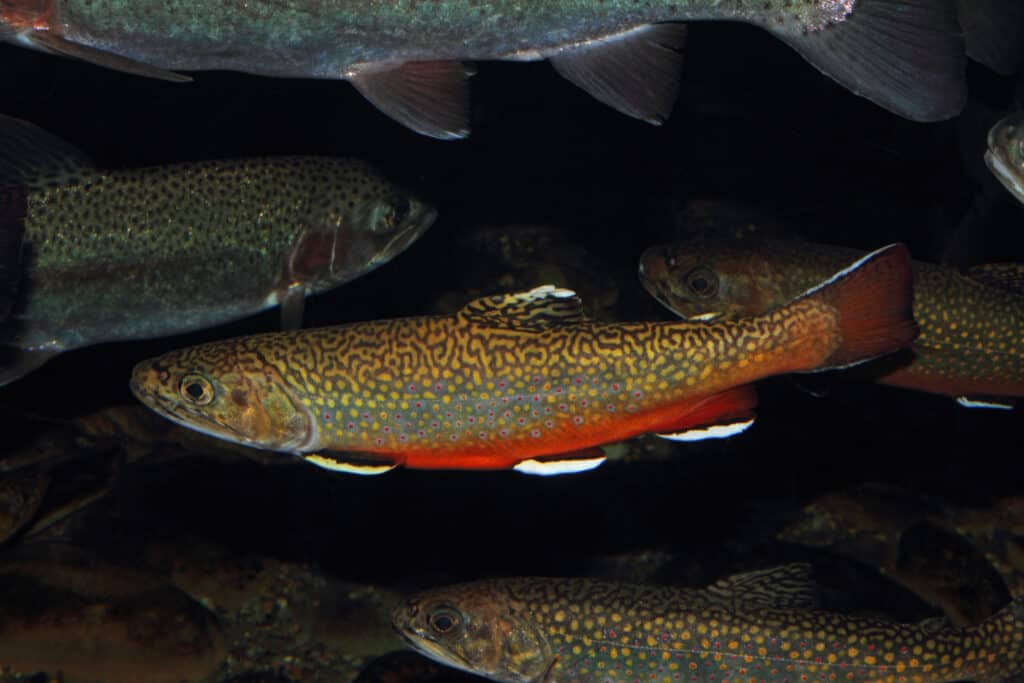
Brook trout are generally small, but the largest brook trout ever caught in Indiana was one for the books.
©M Rose/Shutterstock.com
On average, most brook trout range between 9.8 and 25.6 inches long. In terms of weight, typical specimens vary between 0.66 and 6.61 pounds. That said, some especially large brook trout can grow to massive sizes. These exceptional specimens can exceed 30 inches and weigh 10 pounds or more.
Generally speaking, the largest brook trout tend to live in isolated waterways away from competing species such as brown trout and rainbow trout. This lack of competition allows the brook trout to grow into a proverbial “big fish in a little pond.”
Brook trout caught in Indiana tend to measure smaller in the interior waterways of the state. Brook trout living in Indiana’s lakes and rivers measure between 7 and 9 inches long and weigh from 2 to 3 pounds. However, brook trout living around the Great Lakes can grow upwards of 25 inches and 10 pounds.
The Largest Brook Trout Ever Caught in Indiana
Indiana’s Department of Natural Resources keeps a list of record fish caught in the state. This list includes records for dozens of species, including brook trout. Currently, the record for the largest brook trout ever caught in Indiana belongs to Sonny Bashore. Back in 1973, Bashore managed to reel in a record-setting brook trout while fishing in Lake Gage in Steuben County. Bashore’s prize brook trout measured 3 pounds, 15.5 ounces. While relatively small compared to brook trout caught in other places, Bashore’s brook trout has managed to remain in the Indiana record books for 50 years!
The Largest Brook Trout Ever Caught in the World
Compared to the largest brook trout ever caught, Indiana’s record trout looks positively puny. The record for the largest brook trout ever caught belongs to Dr. J. W. Cook of Fort William, Ontario. Dr. Cook caught his record-setting trout in the Nipigon River in Northern Ontario’s Superior Country Region.
All the way back in 1915, Dr. Cook traveled to the Nipigon River on a 7-day fishing trip. While on the trip, he managed to catch a massive brook trout near Rabbit Rapids. The record-breaking fish measured 34.5 inches long and weighed approximately 14.5 pounds. That said, the fish may have weighed closer to 20 pounds when it was first caught because the fish likely lost weight between the time when Dr. Crook caught it and when it was weighed several days later.
Dr. Cook’s record has stood for over 100 years, and it may well remain for another 100, given the fish’s incredible size.
How to Catch a Brook Trout
Brook trout arguably rank as the easiest trout to catch, especially when compared to the much more difficult lake trout and brown trout. In fact, the hardest thing about catching brook trout isn’t fishing but rather traveling to where they live in the wild.
Brook trout will eat pretty much any kind of bait that you put on a lure. Whether you want to use an artificial lure or live bait, you really can’t go wrong. Popular live bait options include waxworms, maggots, earthworms, and minnows. While they can put up a bit of a fight, most anglers find them relatively easy to pull in.
Given that brook trout prefer cool, clear waters, your best bet to catch brook trout in Indiana is to seek out remote, fast-moving streams. When fishing in smaller streams, try using a small, lighter rod. Brook trout are most active near dusk and dawn and typically move to deeper water during the day. If you’re fishing in the morning or night, try casting near shallow water near banks or cover. During the day, try casting near the middle of a stream or deeper parts of a lake or pond.
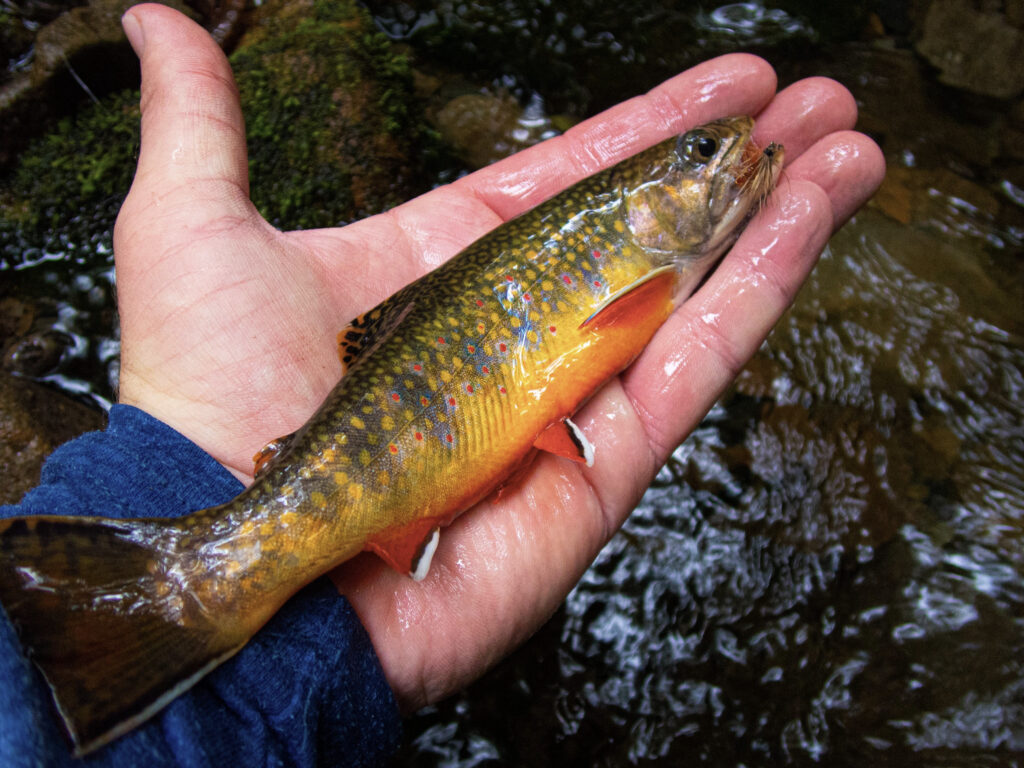
As small as brook trout are in general, this fish is a popular game fish.
©iStock.com/Devin Davenport
Where is Lake Gage Located on a Map?
Lake Gage, located in northern Indiana, is a spring-fed lake spanning 327 acres. Since it lacks public access, this stunning and pristine natural resource sees low levels of traffic. A 3-mile roadway encircles the lake, offering a wonderful path for exercise or a social ride on a golf cart. In the early 20th century, Lake Gage was a thriving resort town that attracted visitors via the railroad for a relaxing vacation.
Here is Lake Gage on a map:
The photo featured at the top of this post is © Slowmotion GLI/Shutterstock.com
Thank you for reading! Have some feedback for us? Contact the AZ Animals editorial team.




